Last updated on 13/01/2021
Ashtanga Yoga has changed since Pattabhi Jois taught his first western students in the 1970s. Back then, there were only four sequences. At some point, the final two advanced sequences were redesigned into Advanced A, B, C, and D. Today, very few people practice the original syllabus.
So I got interested. What was the original syllabus? Well, Primary and Intermediate Series are pretty similar but Advanced A and B are very different.
It’s not easy to find the original sequences these days. There is only one video of the original Advanced A and Advanced B sequences available, posted by Ashtanga legend David Swenson to the online platform Namastream.
There’s only, like, two blog posts detailing the sequence.
Until now.

Fired by the thought of preserving the original sequence, I have recorded a video and created this blog post of the original Advanced A sequence.
Those familiar with the current Ashtanga syllabus will find quite a few differences from the current Advanced A.
For clarity, I will refer to the old sequences as “Advanced A” and “Advanced B” and their modern conterparts as “Third Series” and “Fourth Series.”

Pattabhi Jois orginally designed yoga sequences as a four-year collage course with a different sequence for each year. So, you would learn Primary Series the first year, Intermediate the second and so on. He also taught philosophy, pranayama and kriya exercises.
His first Western students, David Williams, Nancy Gilgoff, David Swenson et al learned the original syllabus. At some point in the 1980s Jois started changing things around and by the early 1990s the syllabus had been reconfigured into the six series known today.
We can only speculate as to his reasons. Some people say that Jois perfected his sequences improving them as time went on. Others say that Jois was overwhelmed with numbers and couldn’t progress students as fast as he used to and so he created more sequences and raised stadards for proceeding to slow people down and cope with the influx. He also quit teaching kriya and paranayama.
So why practice this old version of the series? Well, you won’t get any more elightened doing this then any other series of yoga poses. But I think it’s fun. And I’m an awful Ashtanga geek so what else was I going to do with my free time?
If you want to practice this series be safe and know your limites. Do not push yourself. Do not push through pain. And consult a teacher or experienced friend if possible. I’m happy to answer questions in the comments or via our Instagram (@escsamsara).
In this practice, I skipped two poses for safety reasons: Utthana Shalabasana and Mandalasana. Also, I didn’t feel confident doing the full Eka Pada Kapotasana so I just did normal Kapotasana. These poses are missing from the video demonstration and for this blog post I have inserted photos of other practioners doing these poses.
My current teacher has since helped me access Utthana Shalabasana and Eka Pada Kapotasana, but sadly, not before creating this video. So if anyone wants to practice the authentic original make sure to refer to this post as opposed to the video which is my own idiosyncratic version.
So, without further ado, let’s get started.
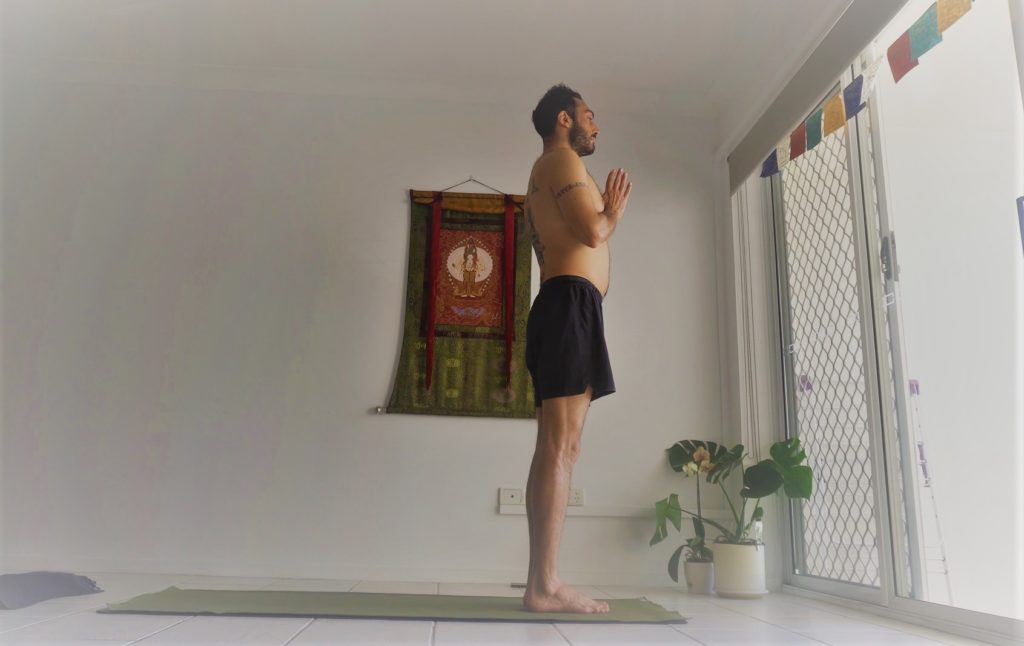
Start with Suryanamaskara (Sun Salutation) A x5 and B x5
Milk these Sun Salutations because it’s all the warm up you’re going to get. In the original practice, we skip standing poses and go straight into…

Vasishthasana
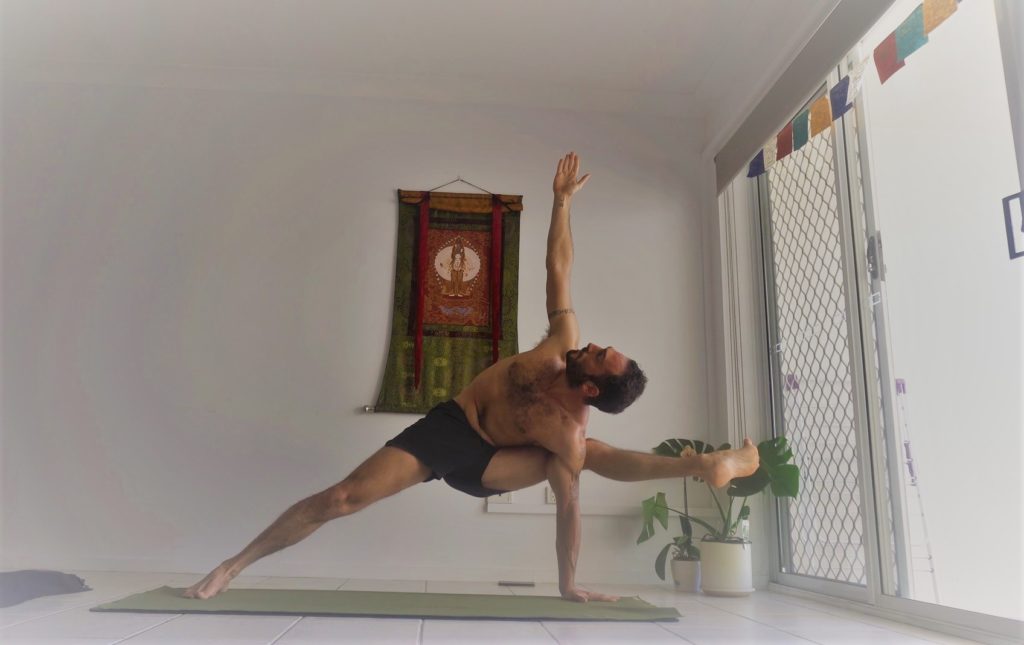
Vishvamitrasana A

Move straight into Vishvamitrasana B and hold for five breaths before jumping back
The next leg-behind-the-head poses are done without vinyasas. You do five poses, one after the other, on the right side. Vinyasa. Then repeat on the left side.
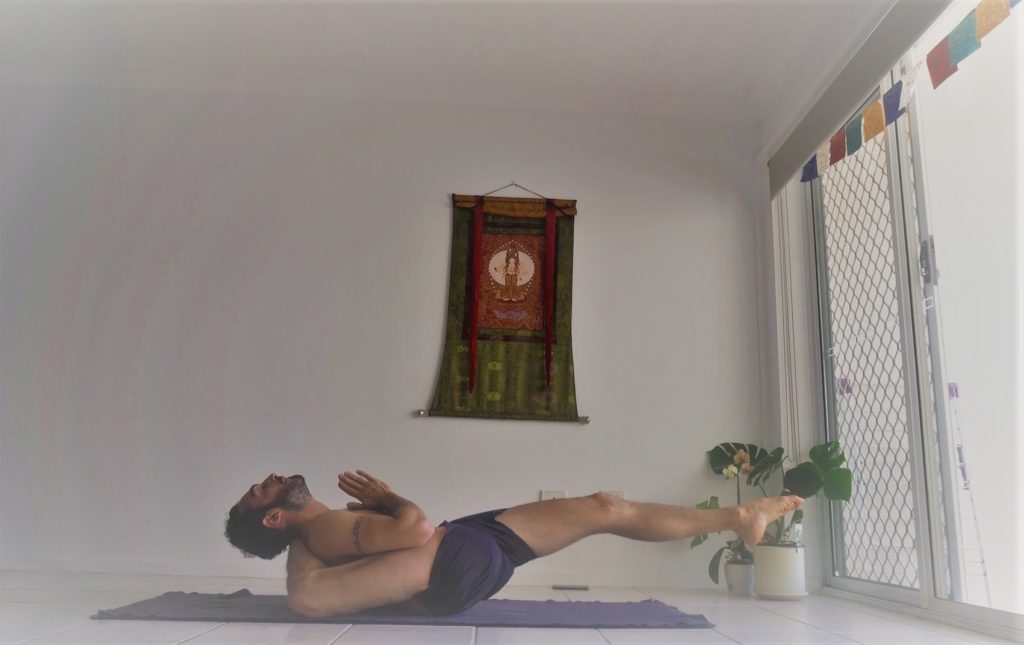
Kasyapasana
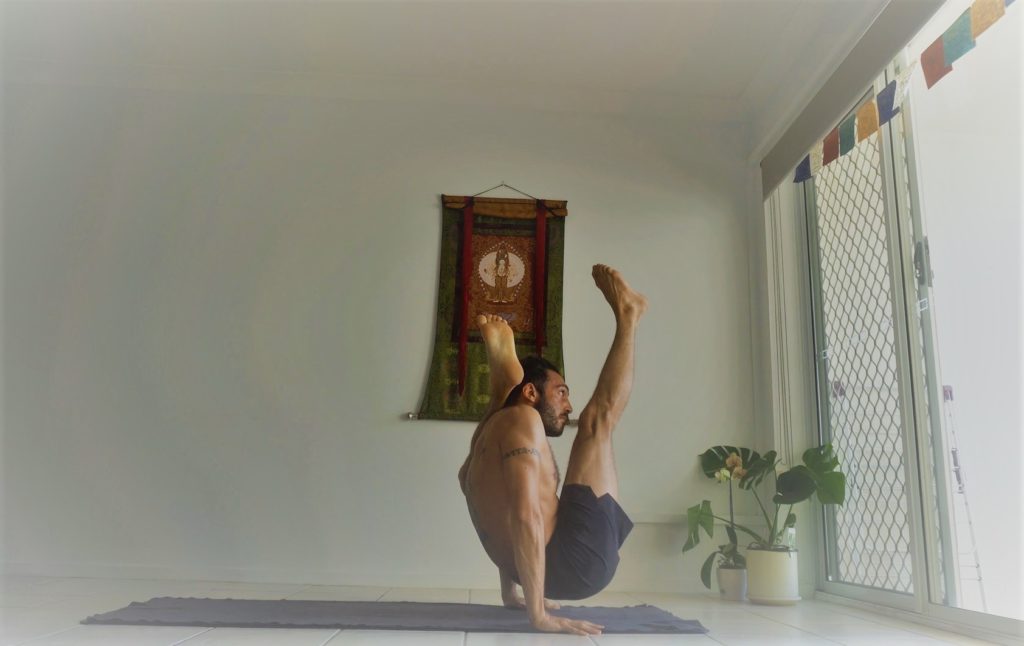
Chakorasana
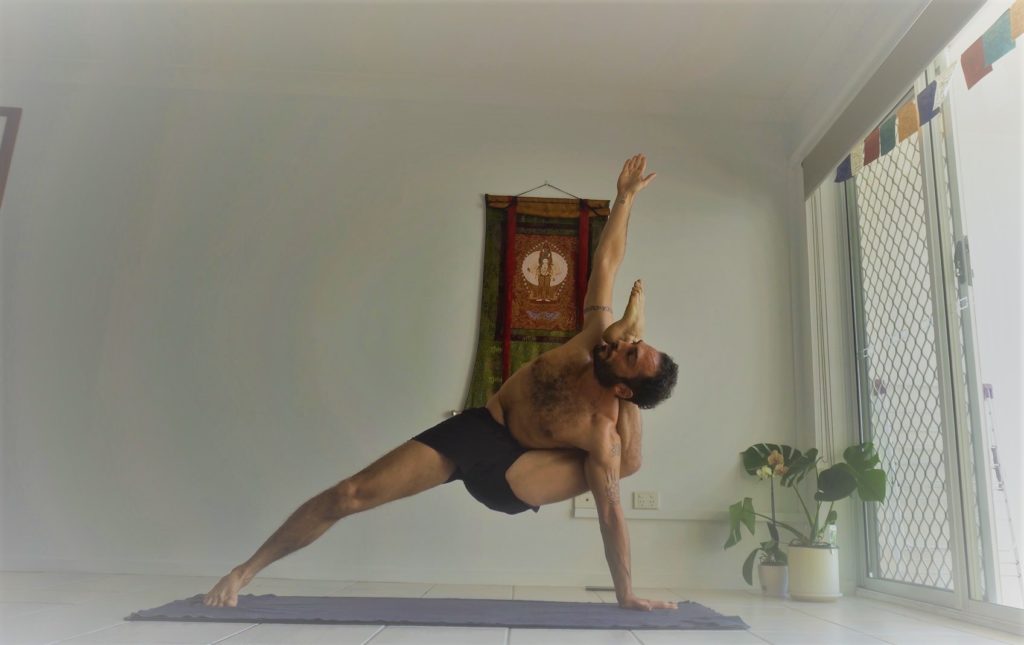
Bhairavasana

Skandasana
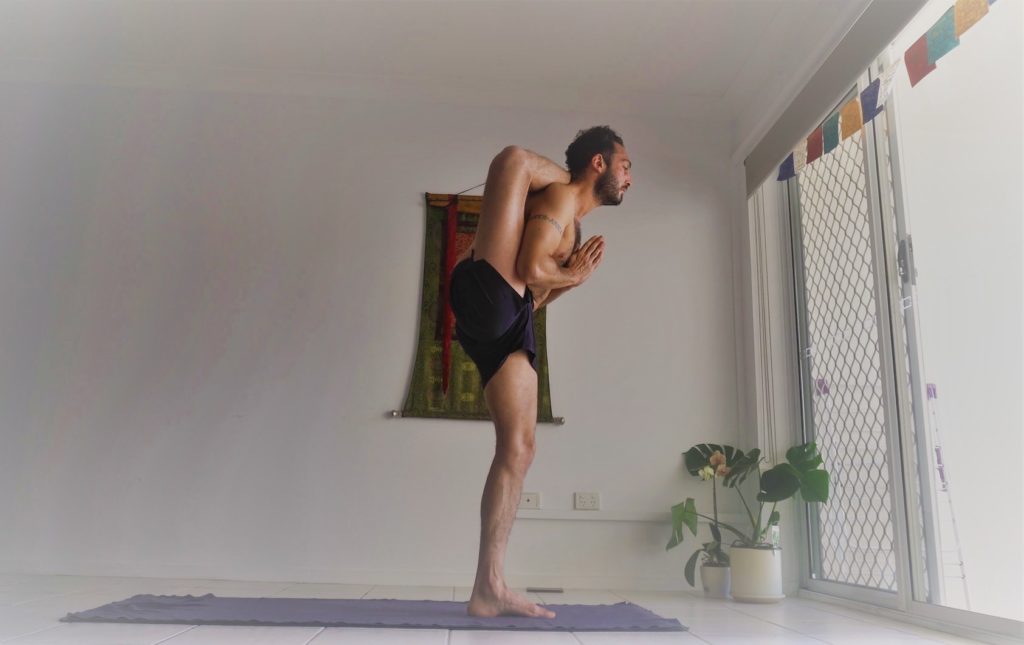
Durvasana
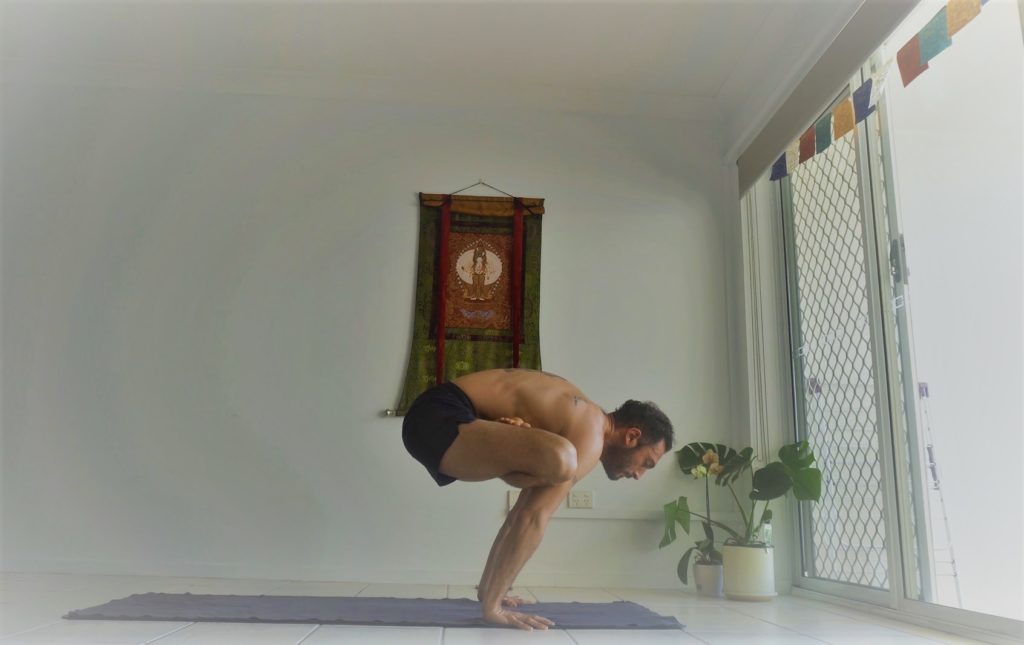
Urdhva Kukkutasana A, B and C. These are the same as Third Series (unfortunately!)
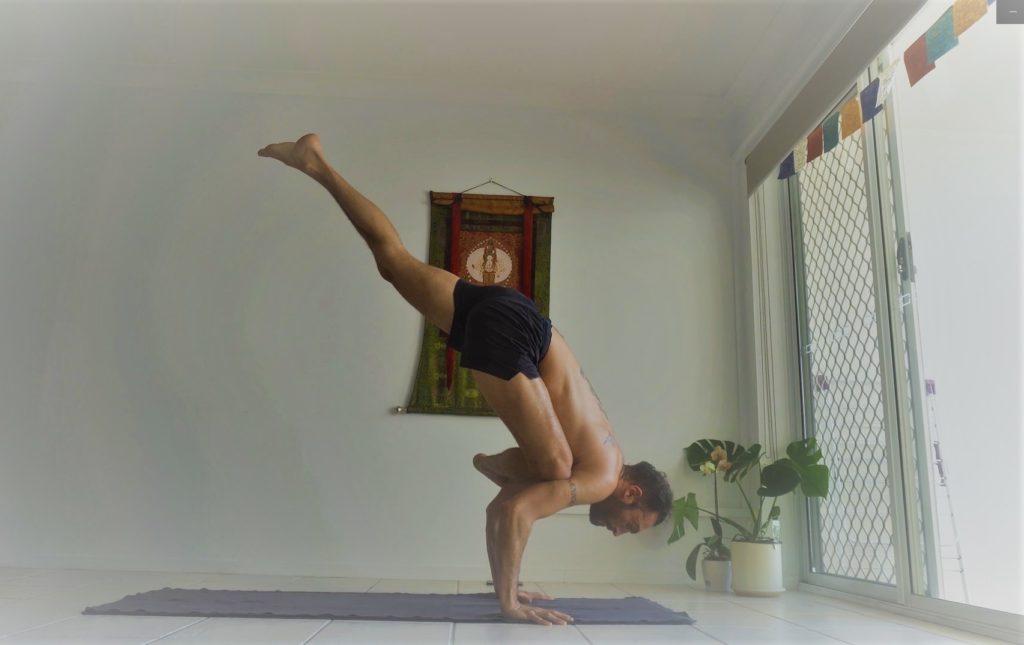
Galavasana. As Third Series
The next arm balances are treated as sets. You do Eka Pada Bakasana A and go straight into the “B” version without vinyasa.

Eka Pada Bakasana A

Eka Pada Bakasana B
Now you do a vinyasa. The next two poses are again performed as a set without a vinyasa in-between.
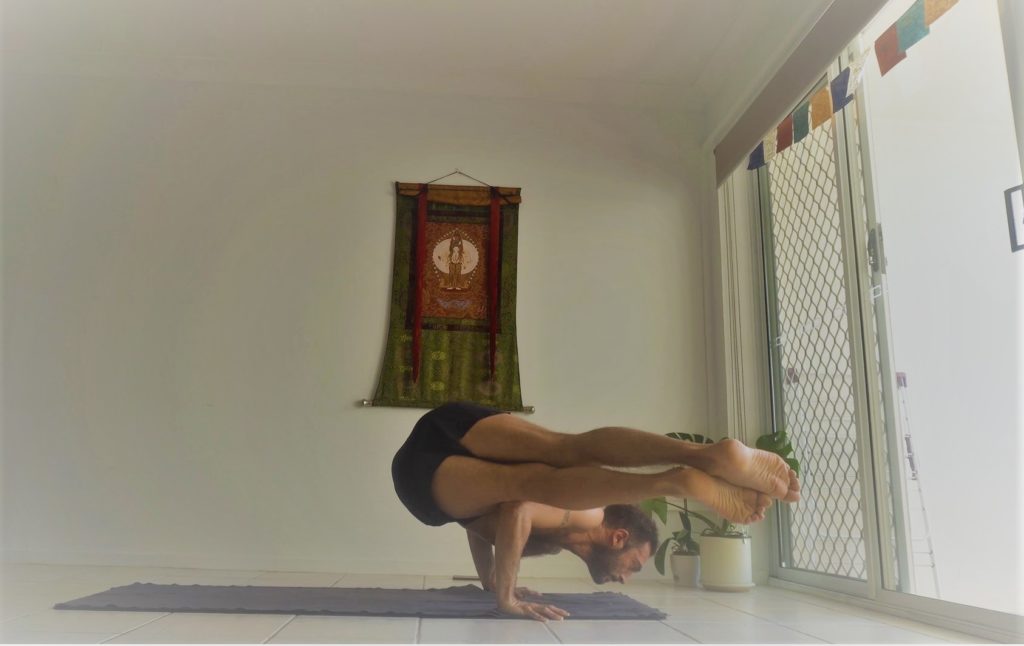
Koundinyasana A
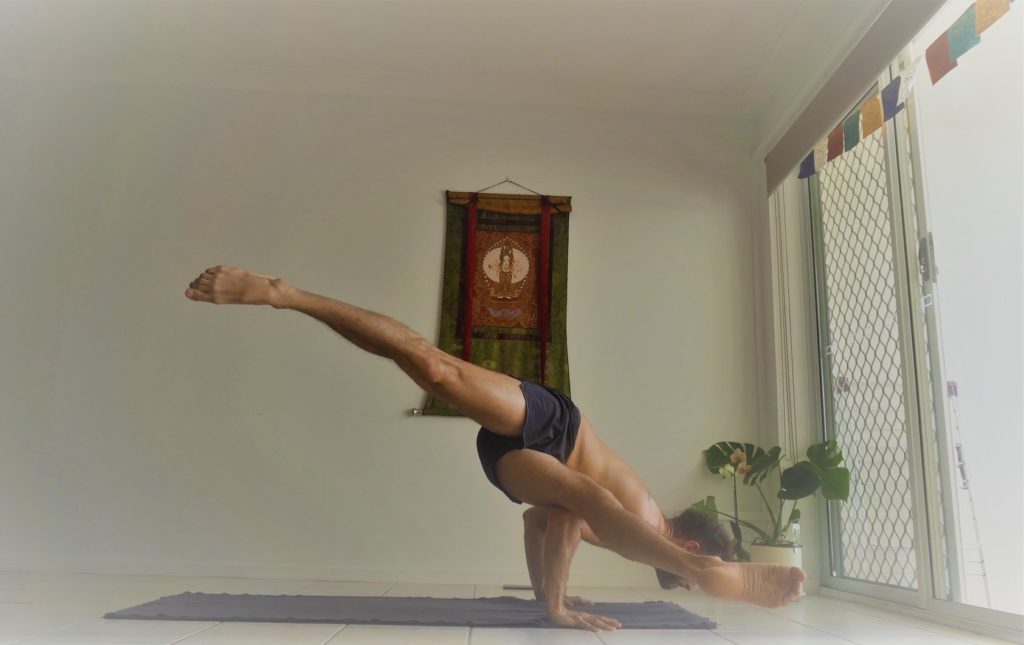
Koundinyasana B
Vinyasa after the two Koundinyasana poses. Then do two versions of Ashtavakrasana. In the original syllabus, according to David Swenson, you enter the first from a handstand or headstand, vinyasa, then jump straight into Ashtavakrasana for the second version.
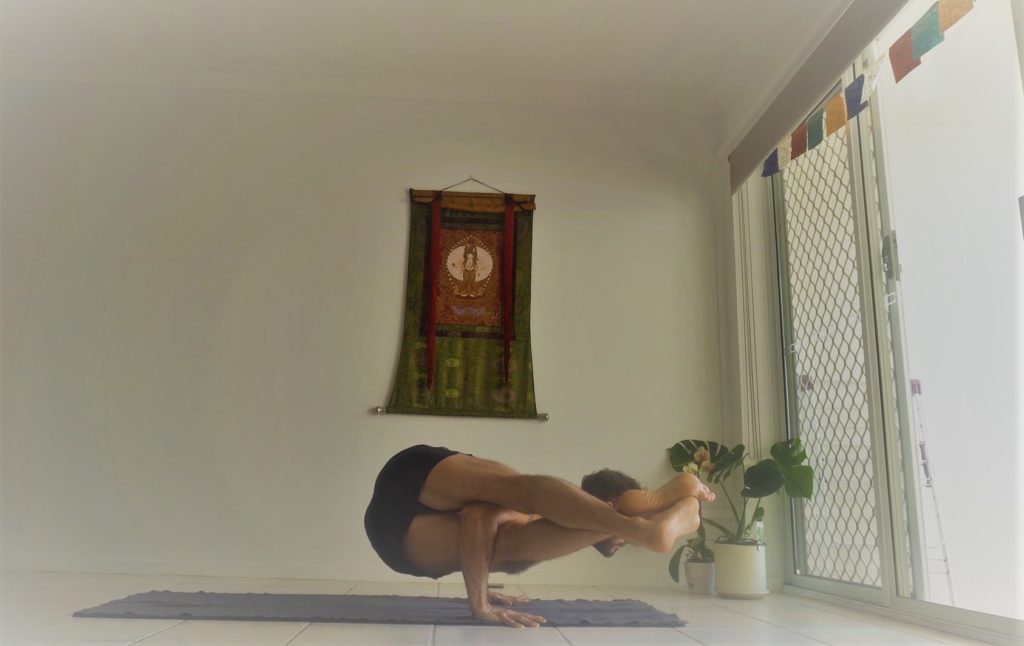
Ashtavakrasana A & B
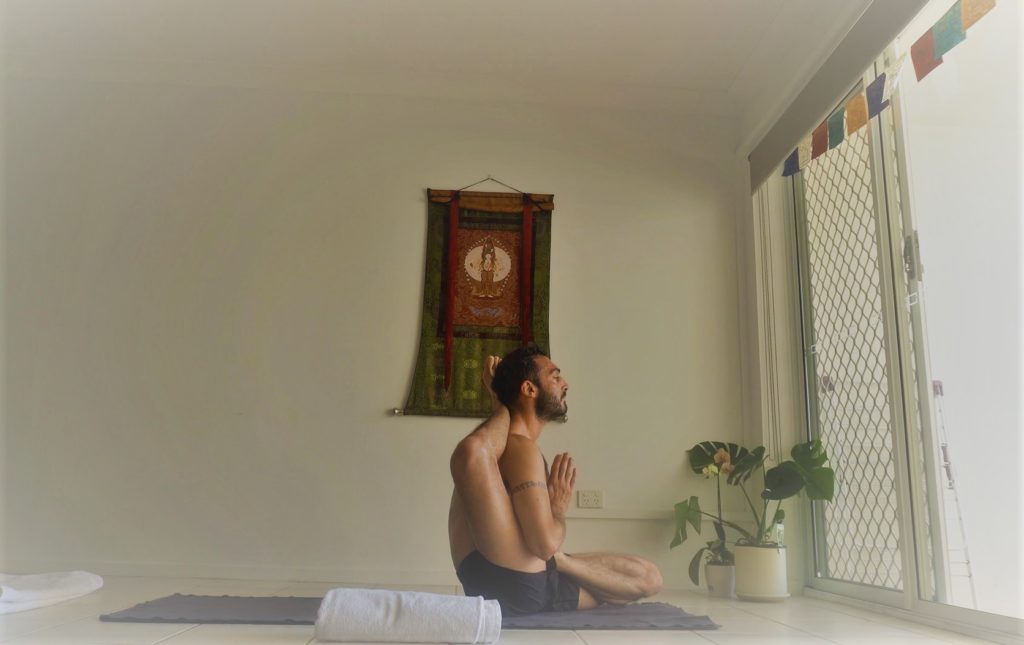
The Viranchyasana A poses are the same as Third Series, with three versions performed one after the other

Viranchyasana A v.2
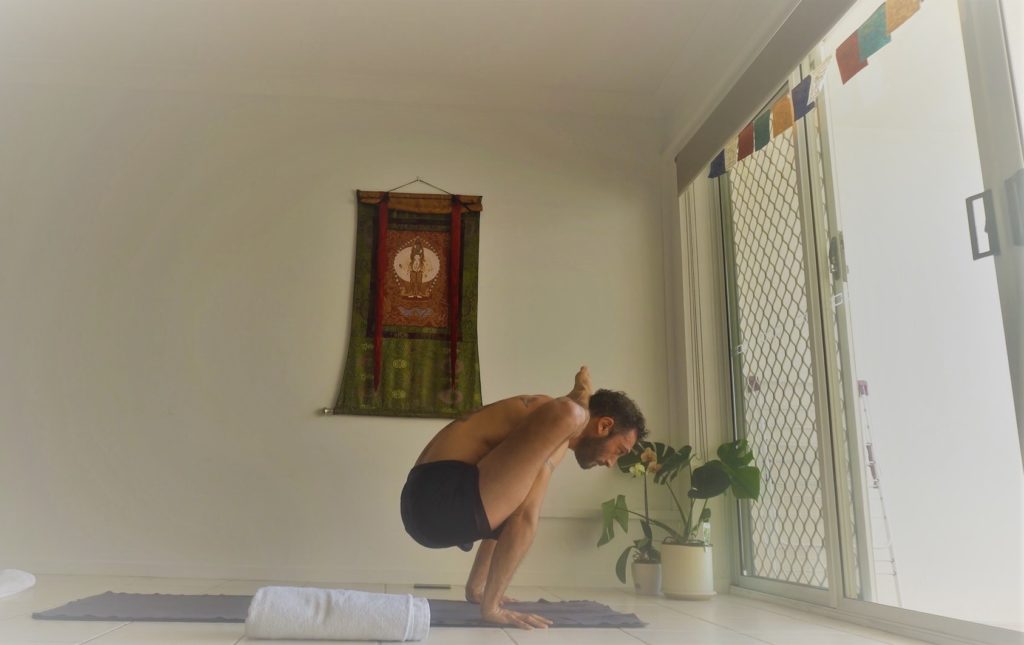
Viranchyasana A v.3
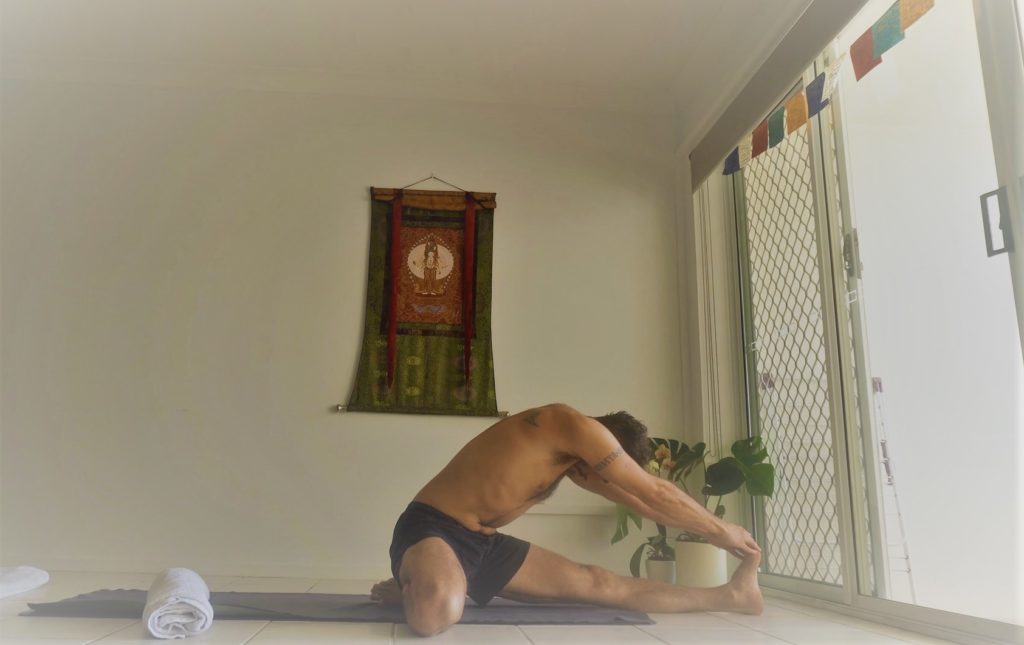
Viranchyasana B is the same as Third Series where you move into a twist straight after folding forward. Here, I am holding with a straight back for five breaths and then folding forward for another five.
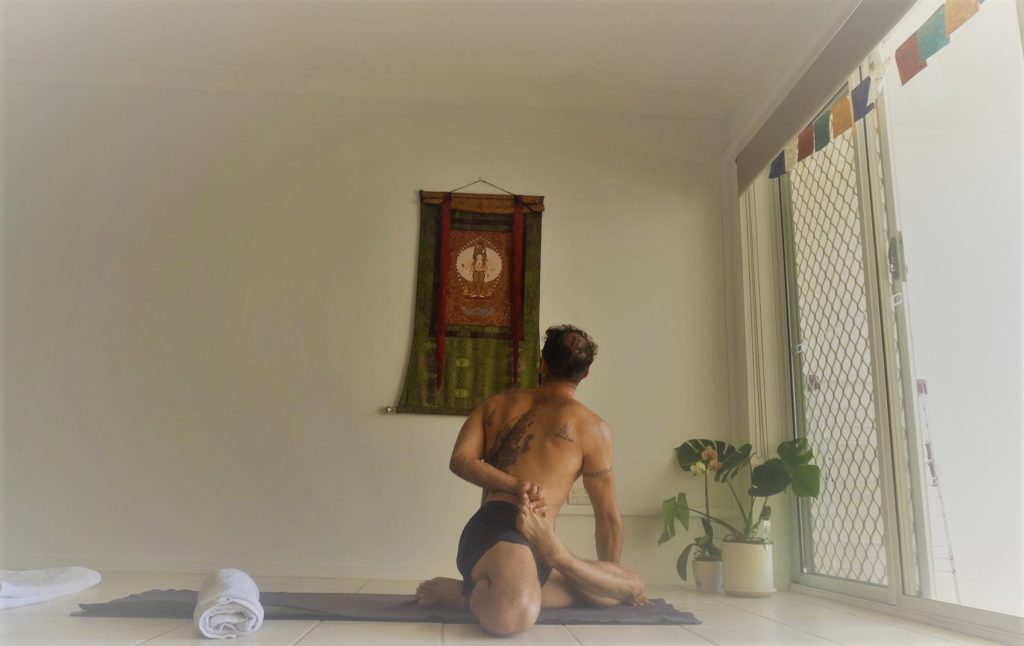
Viranchyasana B v.2
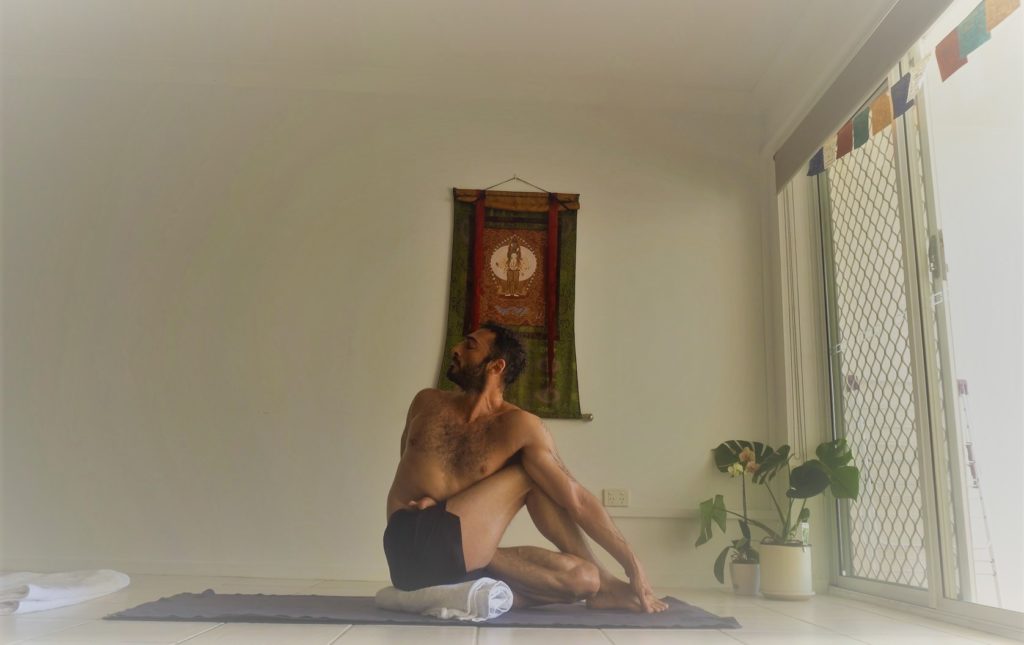
Purna Matsyandrasana (I’d love to know why Jois bumped this pose two positions up when designing Third Series)
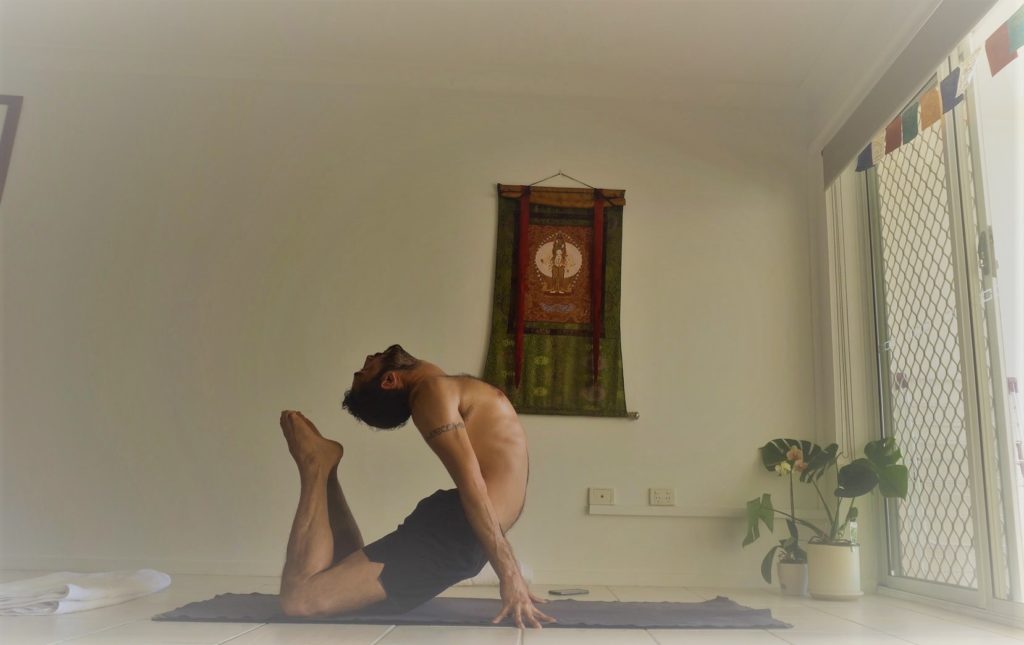
Raja Kapotasana
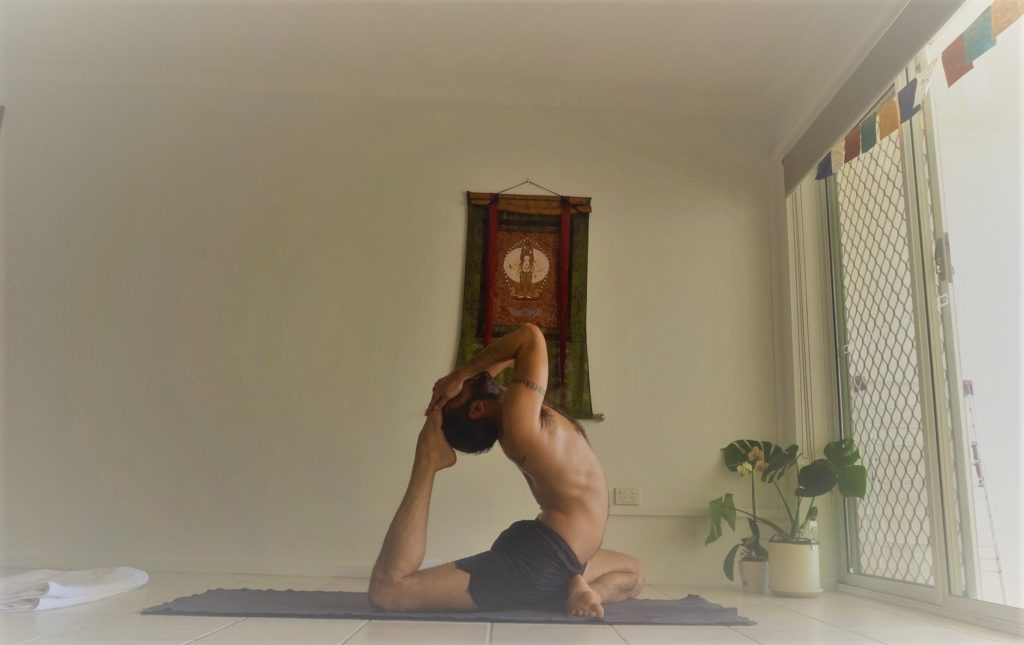
Eka Pada Rajakapotasana

Viparita Dandasana A
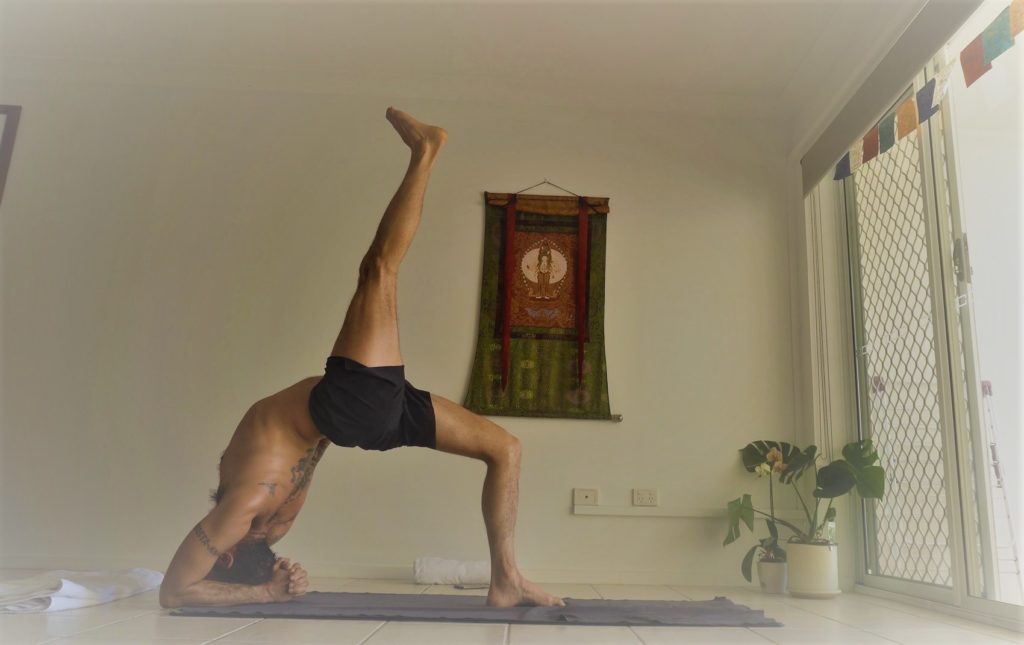
Eka Pada Viparita Dandasana
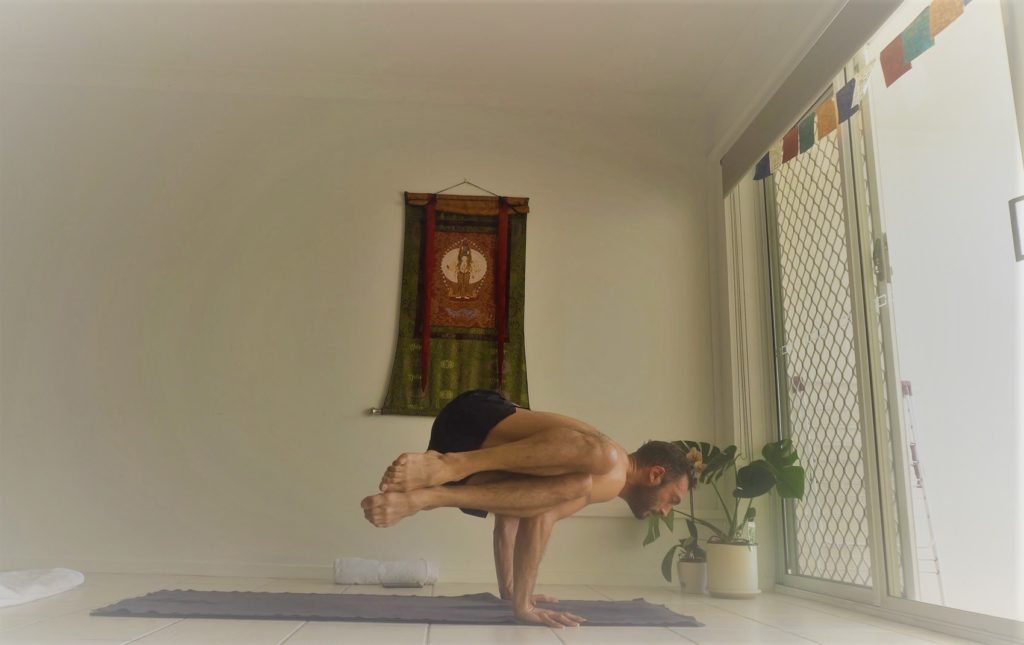
Bakasana Hatha Yoga (also known as Parsva Bakasana)
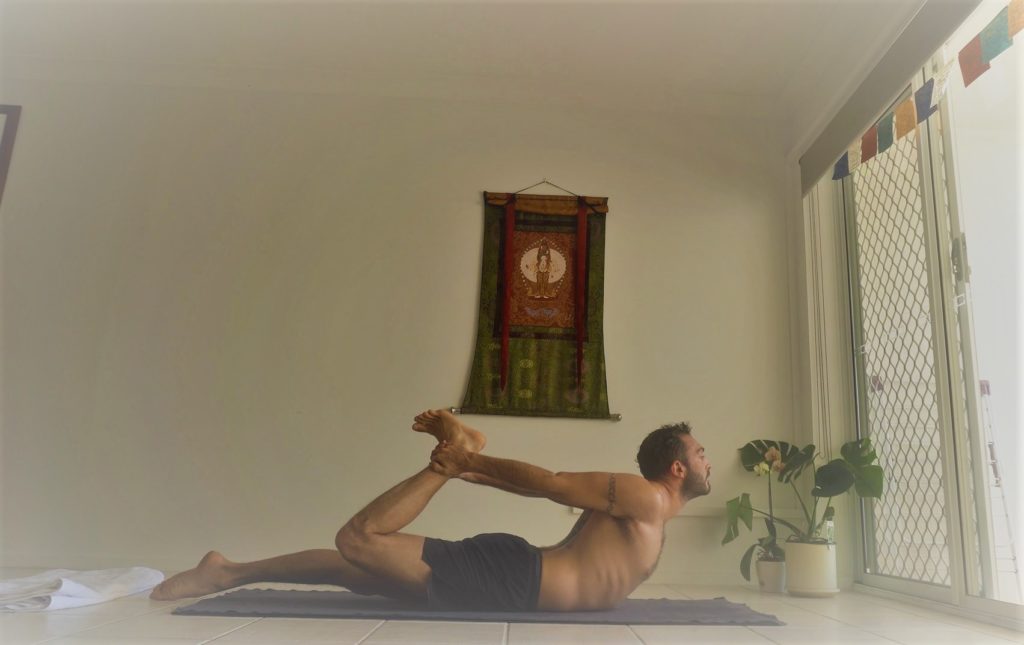
Eka Pada Dhanurasana (great leg strengthener!)
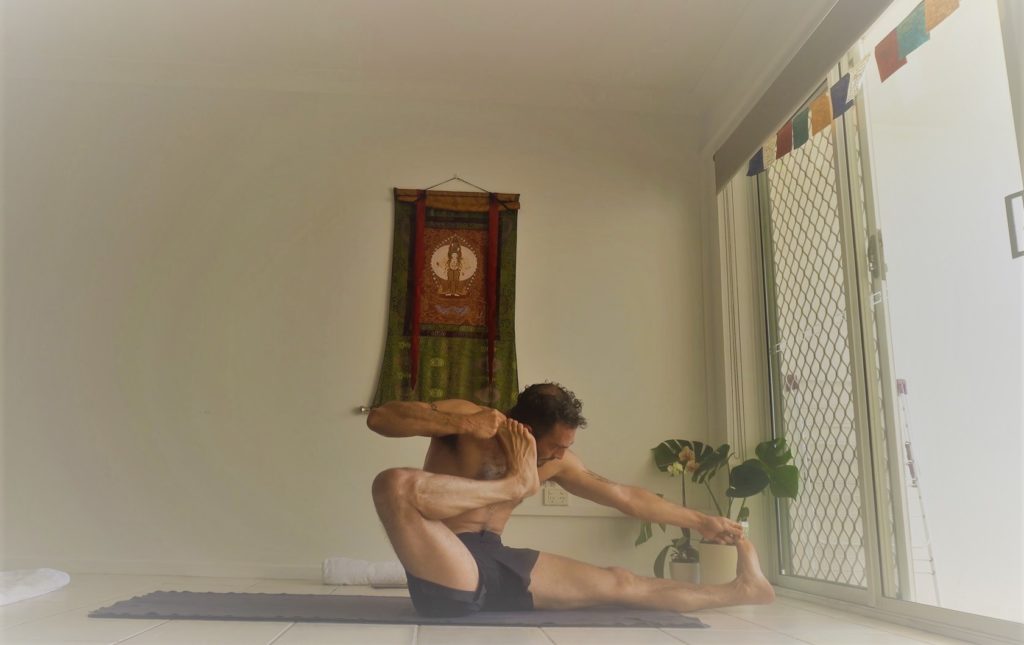
Arkana Dhanurasana (part one and part two with straight leg)
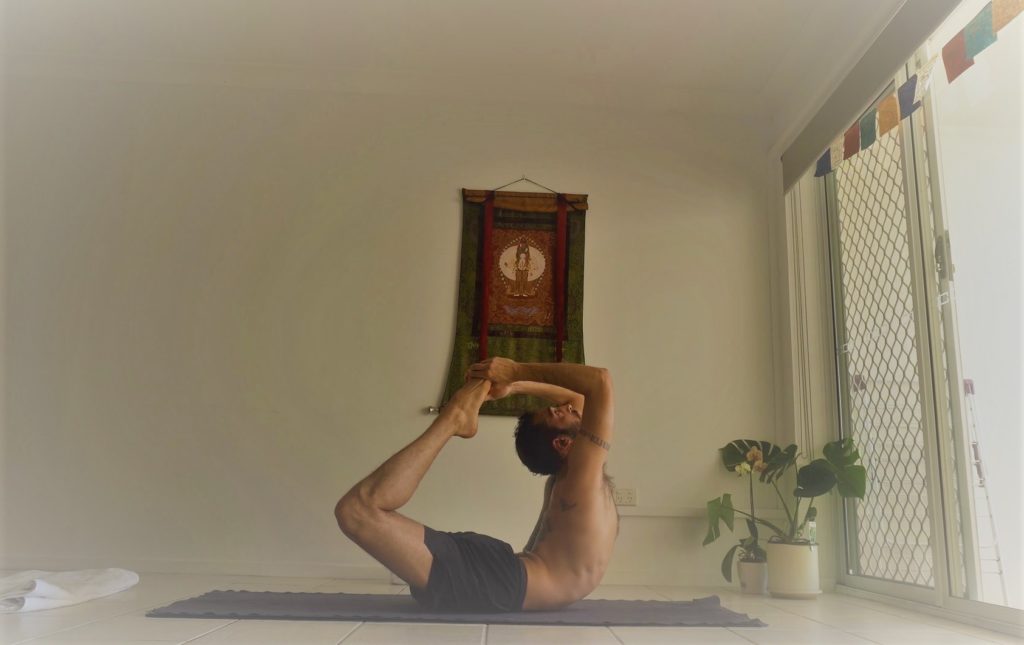
Padangushtha Dhanurasana A, move straight into B version without vinyasa

Padangushtha Dhanurasana B

Viparita Shalabasana. I don’t bring my feet over here because the next two poses allow for that possibility.

Utthana Shalabasana. Ideally entering from handstand
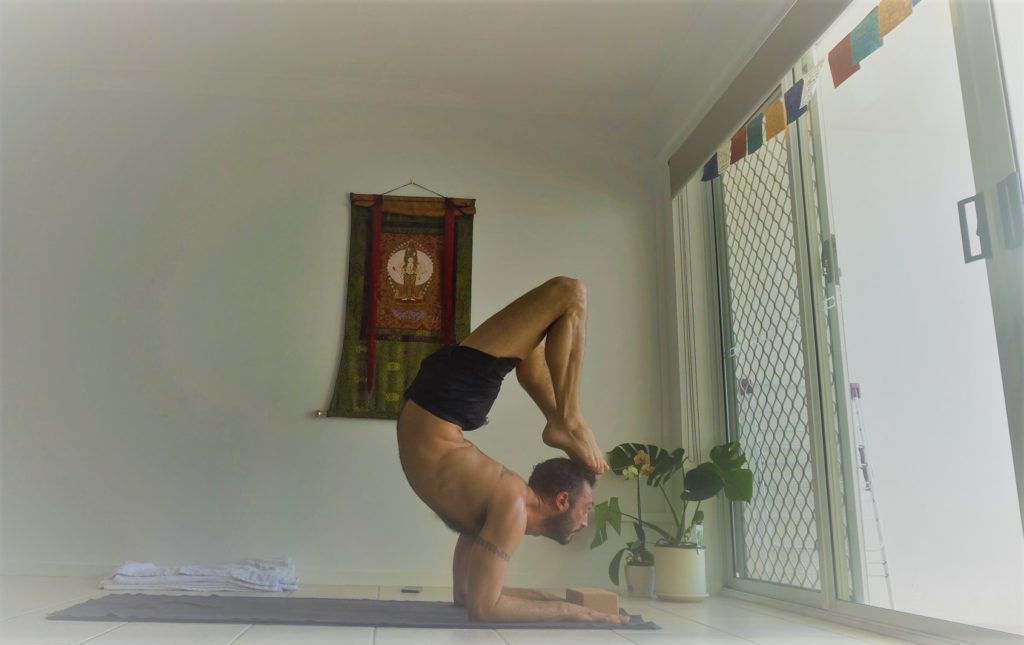
Vrshchikasana
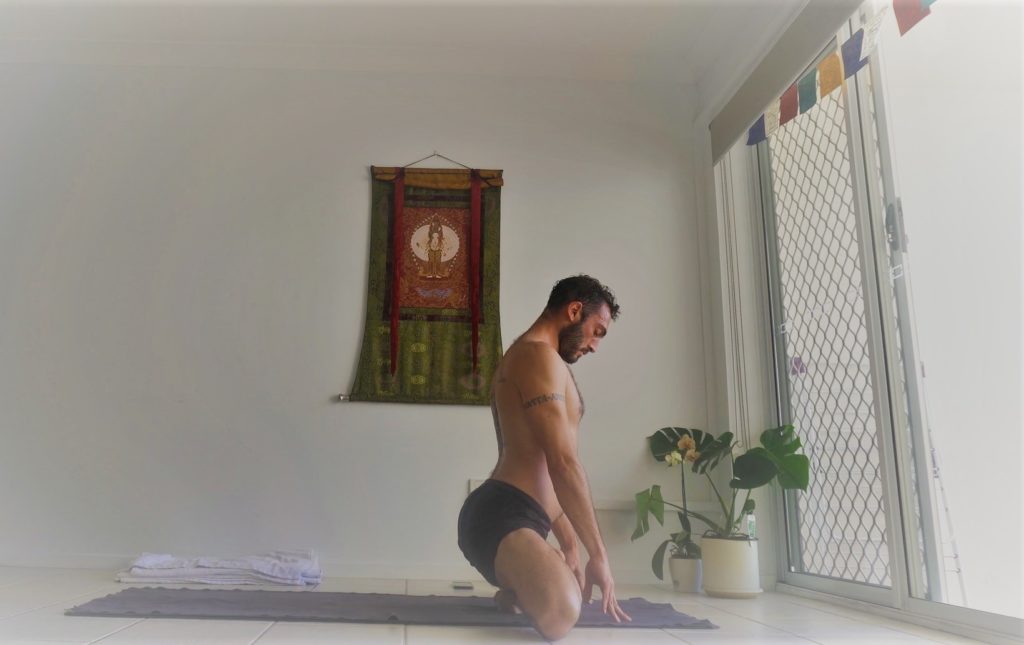
Mulabhandasana

Kandapindasana (I have my feet on a block to attempt to invert my Baddhakonasana)

Buddhasana
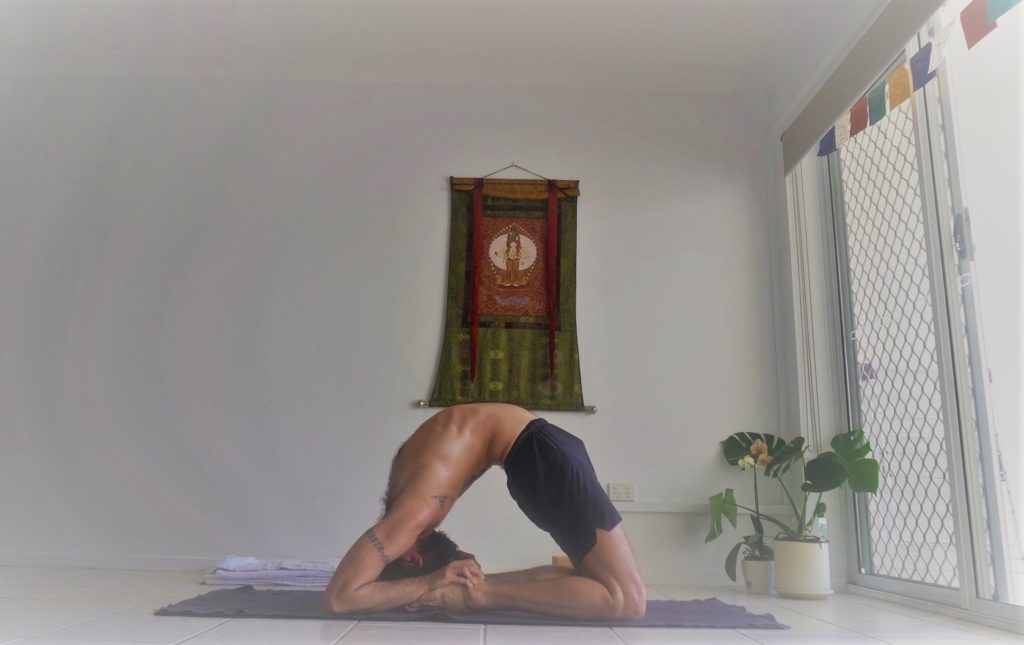
Eka Pada Kapotasana. I wimped out doing it in this practice. But the leg should be out. Like this:


Supta Trivikramasana

Sayanasana

Mandalasana
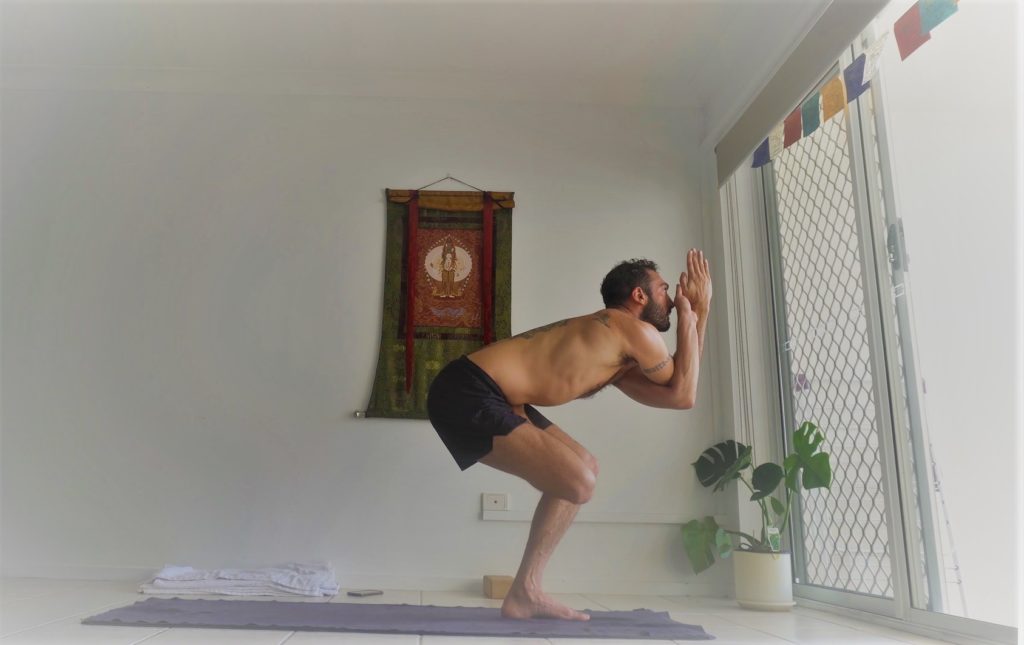
Utthita Swastikasana
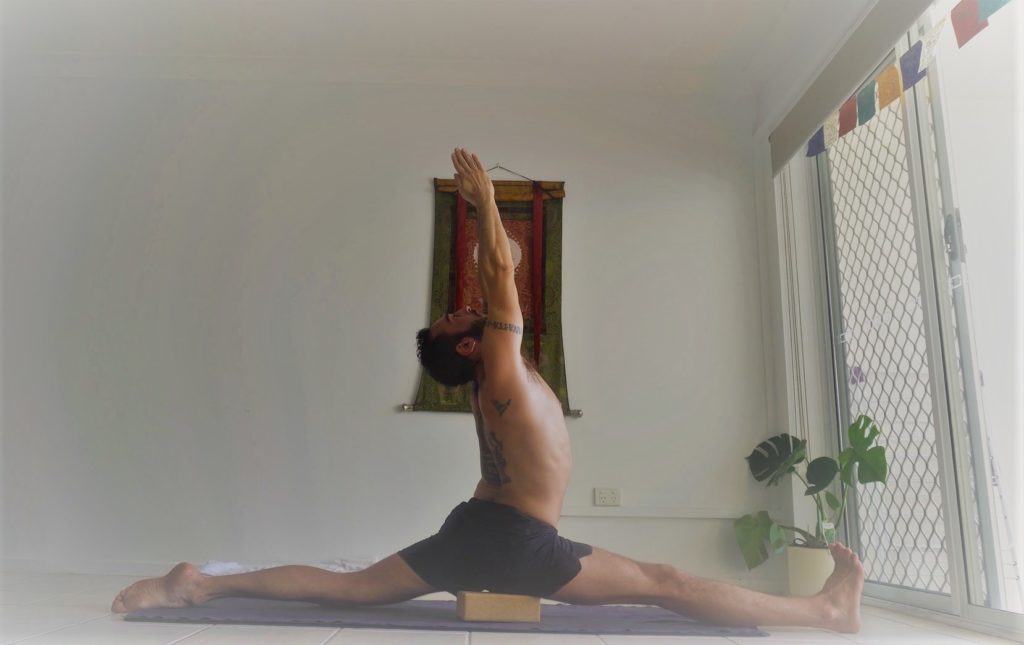
Hanumanasana. Same as Third Series, starting with hands on hips, then reaching up and finally folding forward.
Finishing poses as normal.
So what do you think? I’d love to know your thoughts! Please post a comment below if you tried this sequence yourself. I’d love to talk to some other Ashtanga nerds.
Here’s the video:
I couldn’t have done this work without the fantastic research of Anthony “Grimmly” Hall. Sri Grimmlyji Namaha!
Become a Patron!

Thats just great?. Would also be worth wile to know why it changed, Have you any idea if the advanced series as thought by BNS Iyengar stayed the same? Anyway, much appriciation for your research..and off course the great interviews and podcasts?
Thanks! That’s a good question. I don’t know about BNS Iyengar. I did modern Third Series with one of BNS’ students so I guess that would indicate that BNS has taught the modern version. Be cool to find out 🙂
A friend of mine learned the advanced series from David Williams in the eighties, so I guess that would be quit similar to the syllabus. He than went to mysore to practise with pattabhi jois, but after one year changed to BNS Iyengar. I guess he could tell something on this subject. Also there used to be a wonderfull blog site of Anthony Hall (Grimmly blog post) with a treasure of information on the history on Ashtanga Vinyasa and its innovations. But he took it off line for his personal reasons.
Hey Arie,
actually Grimmly’s the blog is still available (with much less content), but under different URL. There seem to have been some issue with domain name, so there you go
https://grimmly1997.blogspot.com/
Cheers
Evgeny
Muchas gracias??
[…] further details about the sequence please see my blog post, https://escaping-samsara.com/practising-the-original-1974-ashtanga-advanced-a-sequence/ which contains the full sequence and was verified by David Williams as the correct order of […]
Hello, I’ve been practicing Advanced A since learning it from Nancy Gilgoff in 2007 (and we call it Third Series), and Advanced B (which we “old-schoolers” call Fourth) since learning it from her in 2015. Though there are not many of us doing Advanced B, there ARE quite a lot of us doing Advanced A, as well as passing it on to our own students. I noticed a few differences between the way I was taught and have always practiced it from the way you describe here, most notably that eka pada rajakapotasana comes before rajakapotasana and that vrishchikasana is done from handstand (we do it from the forearms in second series, after karandavasana). Other differences involve additional variations of certain things… Anyway, one of my friends who also practices the old way just texted me a link to your article, and I think we both just wanted to let you know that there are actually a whole slew of people still practicing (and loving) the old, original syllabus.